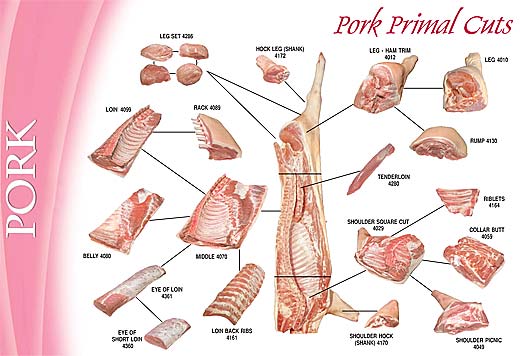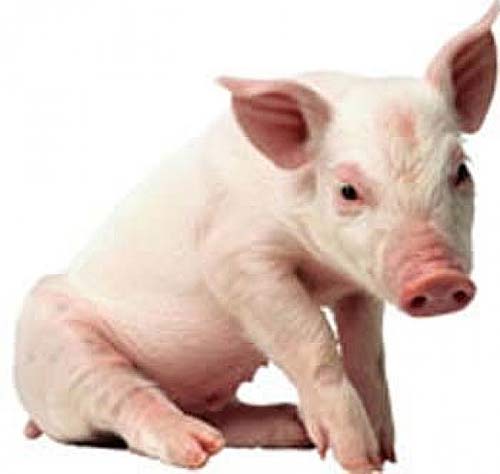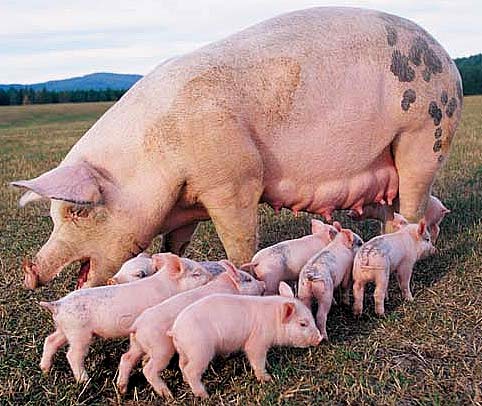Domestic Pig – Pink, Porky, Mud-Wallower

The subspecies Sus scrofa domesticus sounds quite regal and exotic, but in fact it is the Latin name of the common, less-than-regal, domestic pig. Sometimes called swine or hogs, pigs are highly intelligent. The sedentary animals have been primarily bred for their meat, and while forbidden by some cultures, it is very popular as a dietary staple the world over. Such a meaty animal! And people have been able to put almost every bit of its hefty body to use, even the blood and the awful offal.

Owing their modern gemology to their wild boar ancestors, scientists think that the first pigs became domesticated from wild populations as early as 13,000 BCE somewhere near the Tigris River. What made these pigs such an early favorite for domestication? Well partly it’s the ease with which they are raised. Hearty animals with an omnivorous diet, they adapt well to changing conditions and can pretty much take care of themselves. Like dogs, pigs are social creatures who seek one another out for comfort and companionship. They are not herd animals, but instead work cooperatively with whoever is nearby to help dig trenches, look for food and generally look out for each other. When they are hungry they will let you know with some high-pitch squeals.

Like all mammals, pigs have some degree of hair covering their bodies, while some species have more dense and coarse hair, many domestic pigs have a rather sparse smattering of body hair.
Why do the pink porkies like the mud so much? It helps them regulate their body temperature and possibly helps them with annoying insects.

Fact: pigs are called by a lot of interesting names which have grown out of their domestication. a “boar” is a male domesticated pig, while a female is a “sow” – if a male is castrated, he is called a “barrow” and of course, a litter of “piglets” is called a “farrow”. Traditionally the word “pig” was only for young swine, but common usage has lead the word to become the primary descriptor for the species.

